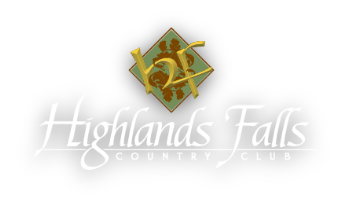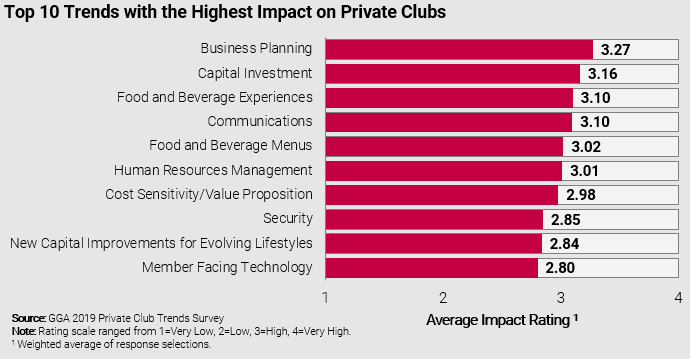EXECUTIVE CHEF
HIGHLANDS FALLS COUNTRY CLUB
Highlands, NC
The Club:
Founded in 1958, Highlands Falls Country Club is a private, member-owned club in Highlands, North Carolina. Perched high atop the Highlands Plateau, where incredible views stretch for miles and miles, is Highlands Falls, a small and close-knit community which has just completed a $3.5 million renovation of the clubhouse to expand outdoor dining and create a unique indoor/outdoor bar and grill area. With updated features, extended dining areas, and sweeping views, it serves as a stylish, luxurious gathering place for members and guests – the response from the membership has been overwhelmingly positive.
Highlands Falls offers all the amenities and activities you’d expect, and then some. Whether members prefer golf, croquet, pickleball, tennis, bridge, fishing, swimming, dining, working out, tennis, competing in “yacht club” races, or a combination of all of the above, they enjoy their play surrounded by mountain views, an incredible waterfall, and folks who can’t wait to welcome you to the community.
Highlands Falls offers 18 holes of pure golf fun on a dramatically beautiful course, a Croquet Pavilion, a tennis center with three Har-Tru courts and pickleball, all of which offer interactive programs and regular social events. The Club has a Fitness facility that includes a weight room, locker rooms, a group fitness room, and is replete with spa services, personal training, group classes, and a private swim complex. The Pool complex includes the swimming pool and aquatic fitness activities. The Clubhouse consists of the administrative offices, kitchen, member dining areas, lounge and banquet facilities, and offers engaging activities for all ages, such as the highly popular Bridge program and fun-filled Junior Camp.
Members love to talk about how incredible the dining experience is at Highlands Falls, which offers both casual and formal dining options, well-priced lunch and dinner menus, special theme dinners, phenomenal wine dinners, a la carte brunch every Sunday, and special dietary accommodations upon request. Whether hosting a small private party, throwing a large private event, or entertaining special guests, Highlands Falls provides the perfect combination of private elegance and impeccable service.
Highlands Falls Country Club Overview
- 284 Members (Golf: 187, Other: 97)
- Initiation Fee (Resident Member Golf: $45,000)
- Annual Dues (Golf: $13,086)
- $5.5M Gross Volume
- $3.1M Annual Dues
- $600K F&B Volume
- 14 Employees Culinary
- 9 Board Members
- Average age of members is 73
The Executive Chef Position:
Highlands Falls Country Club is searching for a committed, proactive, and passionate culinary professional, an Executive Chef who would enjoy working in an exciting private club environment and can select the perfect enhancements to make a lasting impression. The Executive Chef will coordinate and oversee all aspects of the kitchen to ensure quality and consistency of the dining experience. This professional should have strong leadership skills and a proven track record in recruiting and attracting culinarians to the team. Experience in seasonal hospitality operations offering similar services is a plus.
Important Individual Characteristics:
- A naturally enthusiastic personality and passion for the culinary industry.
- Ability to hire, trains, motivates and develops a high performing team in a seasonal environment.
- A natural leadership style which promotes an engaging, motivated staff.
- A mind for innovation and action with an ability to act as a thought partner with General Manager and other department leaders.
- Creativity in menu design, exhibiting an appreciation for the Club’s culinary traditions while exploring fresh and innovative culinary trends.
- The ability to communicate effectively, both verbally and in writing.
- Disciplined follow-through to ensure the vision and goals of the Club come to fruition.
- Ability to cultivate a high-level of member satisfaction through consistency in ding services.
- Possess a strong understanding of top-notch food and beverage experiences for Club members and guests.
- Effective fiscal management through delivery of actual operational and capital results in alignment with approved budgets.
- Maintain a high level of visibility to members and staff as the face of the Club’s dining and catering programs.
- Understands the importance of digital communication and can utilize web and social media tools to communicate with the staff and membership.
- Ability to develop a dedicated team with a shared vision.
Additional Dining Information:
The Formal Dining Room seats up to 200 people for special events, with 120 for normal dining. Formal dining in the mountains is more casual than in typical in town clubs, as is the trend nationwide.
The Grille/Bar area seats approximately 60 people and can also accommodate 20-40 people for cocktails, not counting the bar, which can seat an additional 20 people between the indoor and outdoor bar stools. For the upcoming year, a new bar menu is anticipated to accommodate the desire for dining at the bar, especially in the fall for sporting events.
The Outdoor Dining area has been expanded to seat up to 110-130 patrons, depending on table configurations. All outdoor dining is covered and has drop down plastic curtains and heaters when to protect diners from inclement weather.
Private Events such as weddings can accommodate up to 300 people, utilizing both the indoor and outdoor spaces. For events of this size, the dining services will be closed to the membership. There are also two private meeting rooms, capable of seating up to 40 people for special events.
Candidate Qualifications:
- A minimum of 5 years of progressive leadership and management experience in a hospitality environment. Current Executive Sous Chefs at well-recognized organizations, with verifiable records of achievement will also be considered.
- Food safety certification.
- Certification from American Culinary Federation or other hospitality association.
- A degree from a post-secondary culinary arts program.
Note: A pre-employment drug screen and background check will be required. The position is available January 1, 2021.
Salary & Benefits:
Salary is open and commensurate with qualifications and experience. The Club offers an excellent bonus and benefit package.
Inquiries:
IMPORTANT: Interested candidates should submit résumés along with a detailed cover letter which addresses the qualifications and describes your alignment/experience with the prescribed position by Wednesday, December 3, 2020.
Those documents must be saved and emailed in Word or PDF format (save as “Last Name, First Name, HFCC Chef Cover Letter” and “Last Name, First Name, HFCC Chef Résumé”) respectively to: execsearchus@ggapartners.com. Please e-mail résumé with references.
For more information about Highlands Falls Country Club please visit clubhfcc.com.




















